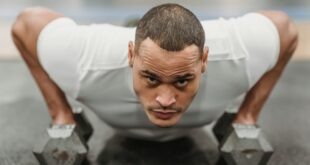Everyone knows how important it is to get your muscles worked on. Boxing is one of the few activities that engages your whole body, it’s one of the main reasons why it isn’t that simple. Life these days is hectic more than ever, nobody has the time for working out each muscle of their body. Boxing isn’t about throwing powerful punches, the prime physical aspects of this game are balance, power & movement, all of these originate from your lower body. However, technical aspects of this combat sport like accuracy, defense landing punches come from the upper body. An effective key for perfecting your boxing training is understanding how the muscles get utilized in boxing and how they fit their purpose. Have you ever wondered what muscles exactly boxing works on?
Even if you aren’t practicing this sport for exhaling professionally in that field you can practice it for boosting your stamina, bulking your muscles, or developing overall strength. Boxing will take you there. And knowing what muscles the exercise is targeting, will help you in focusing the workouts while monitoring your success & development. In addition, the muscles work effectively on your cardiovascular system.
Muscles that Boxing works on
● In your upper body
It’s your fists that make contact with the opponent or punching bag or but it’s the arms that transfer the power. While throwing punches gives a good workout to your arms there are many muscles that boxing works in your body.
1) Boxing & arm muscles (Power Delivery, Speed & Snap)
There are two primary muscles in your arms — the biceps & triceps. Your biceps sit at the top of your arm & the triceps at the bottom. While you are throwing the punches, you extend the elbow out. Arm muscles that get extended in your elbow are the triceps, the major part of your arm that gets worked on during the punch. The biceps get used more while you are throwing a hook or uppercut. They bring power from the top of the arm out to the fists while helping you to retract the arm when you’re done throwing a jab.
The triceps are the muscle group that runs under the arm & gets used while you extend the arm. In the game of boxing, it’s the prime muscle that gets worked on while you intend to throw a punch, they pull all the power up the floor & drive it into the opponent or the punching bag or the boxing gears you are using for the training. As you start practicing this game you will see these muscles begin to tone up within a few weeks.
2) Boxing & your shoulder muscles (Arm Endurance)
If the arms are the point that releases all that power that has been stored in the body and exerted onto the opponent or the punching bag, then the shoulders are hinges which help in extending & retracting the arms with every punch you throw. No matter if you are driving an uppercut or trying to pull back after throwing the jab, the shoulders are the lever that controls all of these motions. So, while you are training boxing you will necessarily feel the burning sensation in the shoulders.
But, what exact muscles does the boxing target in the shoulders? Boxing engages the deltoids; these are the muscles that stretch at the top of the shoulders. You will feel the muscles working on your pecs from the front of the chest & across your back through those muscles that cover the scapula and shoulder blades.
● In the core
Your core consists of large muscles that include every muscle starting from the hips up the shoulders. Commonly known muscles of the core region are abs but the glutes, hips & back muscles are also considered as a part of the core muscles.
1) Chest (Upper Body Core)
Your chest muscles are considered as part of your upper body core region. The prime functions of these muscles are to connect the shoulders, arms & lats into the combined force. They generate the punching power from the upper body.
2) Boxing & your abs
Your abs and abdominals are primarily considered by fitness fans & sportspeople. Working the abdominals help in toning up the stomach & leads to the development of a six-pack.
Ab muscles during boxing practice get worked out by twisting the motion of the punch. While you push the punch towards the opponent, you twist the waist extending the punching arm & recoiling back to the defensive stance. It’s a great move for targeting your abs, the more you train the more these muscles get developed, meaning the punches get stronger while giving you a higher reach.
3) Back (Rear Body Core & Punch Recovery)
Your back also functions as the total core muscle because it holds the body together & combines the power which gets generated by the limbs. It determines the speed of your pulling back punches. Fighters are more into developing their front and do not focus on building back. While you throw the punch, the heavy bag bounces it back on the recovery phase. Neglecting your back will give you weaker recovery punches. Weaker backs will affect your punching ability and they will tire more quickly.
In the lower body
Fast feet is the basic requirement of boxing. Boxing practice necessarily develops stamina in the lower body. One of the reasons you can last longer in the fighting ring.
1) Legs (Power)
Your legs consist of two prime regions: quads & calf muscles. Both of them must get trained while you try to ingrain anything powerful or physical ability in your body. Keep in your mind that all of your boxing power originates from the floor. As the legs are the body parts that are directly connected with the ground, they’re primarily responsible for pushing you off the floor for generating power throughout your whole body. The legs are considered the biggest muscles in the body, this is why most boxing punches are typically thrown by the legs being pivoted & rotated.
It’s the legs that generate the power! Not your chest & the triceps. Though they play a major role in transferring it. If you take a careful look at the dynamic & complete punches, you will get to know why they have strengthened legs more than the great arms or huge chests. Next time while watching a boxing match take a careful look at the boxer’s body. Because it is the legs that need to be strengthened for boosting the power.
2) Hip muscles
Your hips hold the lower body & legs together. They generate major power by pivoting the whole body whenever you need them. The important function that the hips have must do is to keep you perfectly balanced. As the hips are the body section that is most close to the body’s center-of-gravity, strengthened hips mean that you will have control over the balance. We all know how important balance is when it comes to practicing boxing. Balance necessarily determines the effectiveness & efficiency of the offense, defense & your overall fighting ability!
Boxing is an amazing sport for building & toning your glutes & hips. While you pivot the punches & drive through the body to get your full power.
Other Muscles
Neck muscles get used up for offering punching resistance. Forearm muscles are important for tightening the fist harder while you throw punches. A tighter and stiffer fist means the hand will give out a solid punch. A tighter fist also reduces the chances of injury. These are the prime muscles that get strengthened by practicing boxing.
 HammBurg Be informed with latest news, reviews, entertainment, lifestyle tips, and much more.
HammBurg Be informed with latest news, reviews, entertainment, lifestyle tips, and much more.




